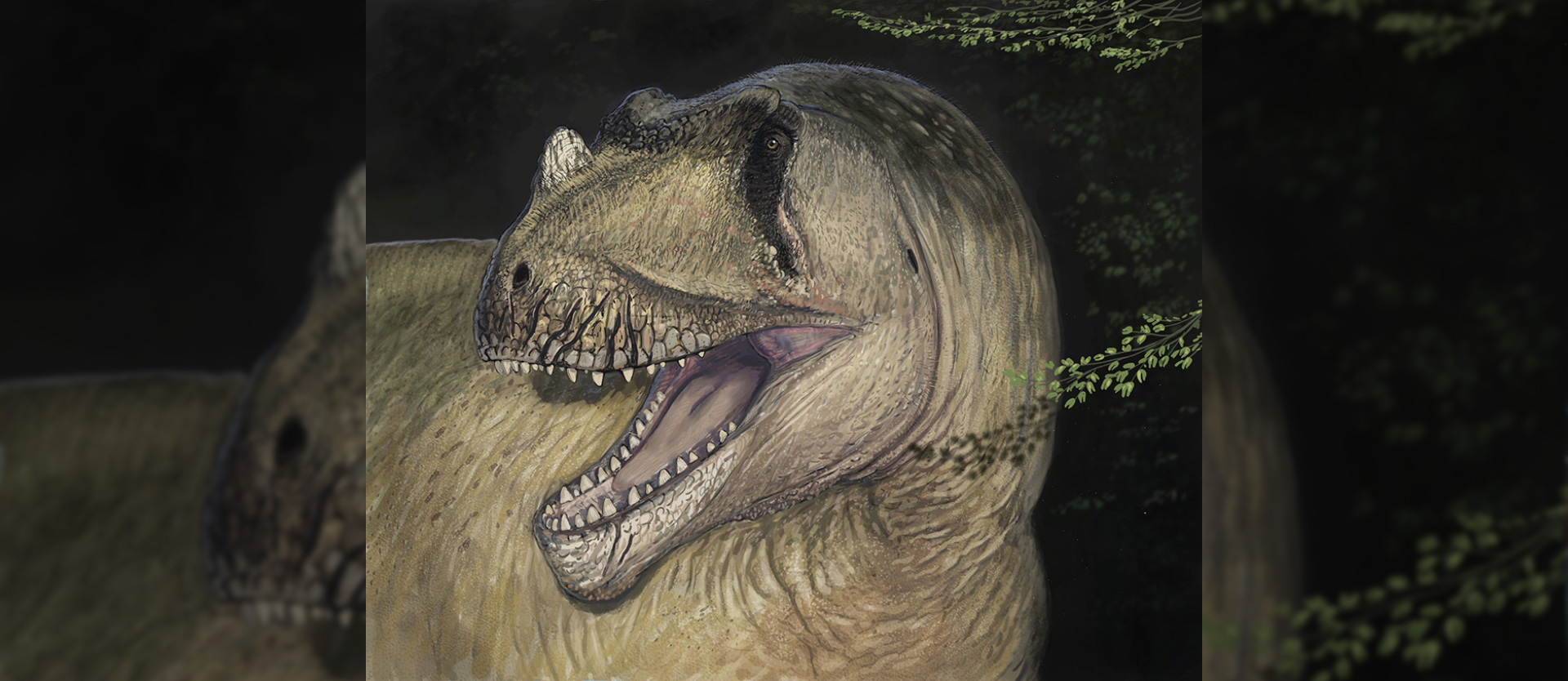Old photos - new dinosaur
Munich paleontologists discover new species of predatory dinosaur in photos over 80 years old.

The eventful history of the fossil lies far in the past: the discovery of the original skeleton of the large predatory dinosaur goes back to the Munich paleontologist Ernst Stromer von Reichenbach (1871-1952). The fossil was discovered in 1914 during an expedition in the Egyptian Bahariya Oasis. It later came to Stromer in Munich. There it was kept in the Bavarian State Collection of Palaeontology and Geology, which at the time was located in the Alte Akademie in the center of Munich. Stromer assigned the fossil to the genus Carcharodontosaurus, the shark-toothed lizard. At around ten meters long, it is one of the largest known land-dwelling carnivores in the history of the earth - comparable in size to the slightly younger Tyrannosaurus rex from North America.

Skeletal remains of Tameryraptor markgrafi on display in the Alte Akademie. Taken at an unspecified date before the destruction of the material in April 1944, Tübingen University Archives (Author unknown)
On July 21, 1944, the Alte Akademie building was hit by a bomb during an air raid on Munich and burned out. A large part of the collection at the time, including all the Egyptian dinosaur fossils, fell victim to the bombing. The finds were then forgotten. The only remnants of Egypt's Cretaceous dinosaurs are Stromer's notes, illustrations of the bones and a few photos of the original.
As part of new research, paleontologist Maximilian Kellermann, a Master's student at LMU Munich, has now discovered new, previously unknown photos of the predatory dinosaur. The images show the original skeleton from Egypt - consisting of parts of the skull, spine and hind legs - before it was destroyed in the Alte Akademie exhibition. Together with dinosaur specialist Prof. Oliver Rauhut from the Bavarian State Collection of Palaeontology and Geology and predatory dinosaur researcher Dr. Elena Cuesta from LMU Munich, Kellermann analyzed the images.

Colored detailed view of the skeletal remains of Tameryraptor markgrafi on display in the Alte Akademie. (Author unknown)
“What we saw in the historical images surprised us all. The Egyptian predatory dinosaur skeleton depicted there differs significantly from more recent Carcharodontosaurus finds from Morocco,” says Maximilian Kellermann, first author of the study.
“We identified a previously unknown predatory dinosaur species here and named it Tameryraptor markgrafi.”
Tameryraptor was about ten meters long, had symmetrical teeth and a distinctive nasal horn. The name refers to the ancient Egyptian term for Egypt “Tamery”, the Promised Land, and honors Stromer's fossil collector Richard Markgraf, who unearthed this dinosaur remains.













